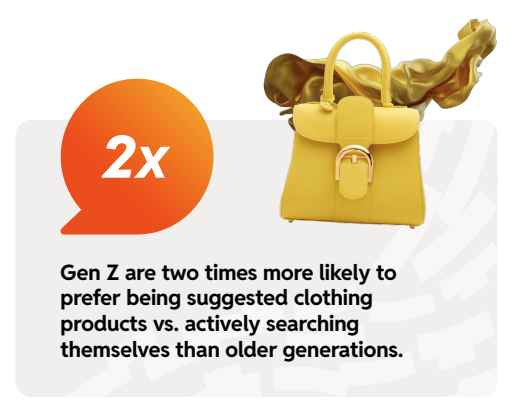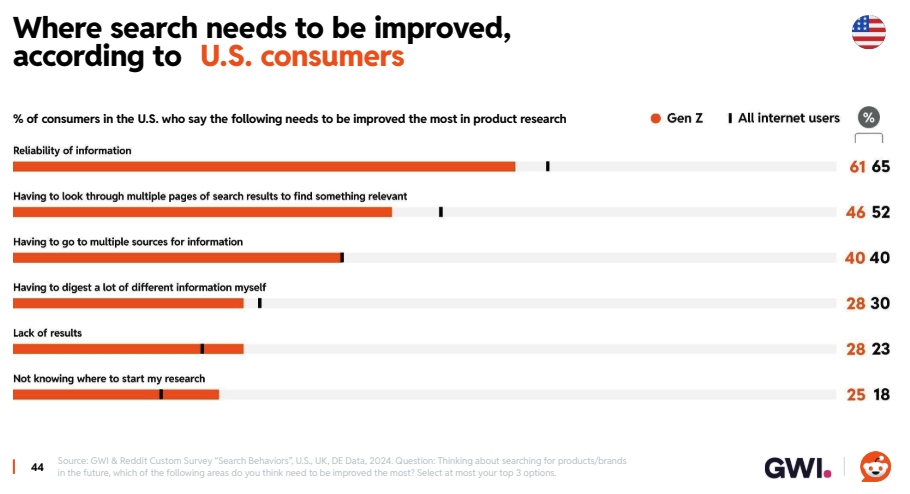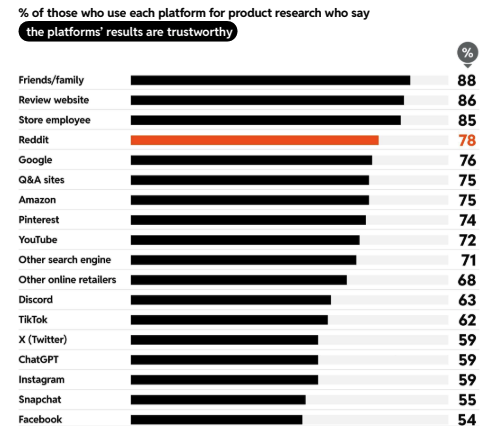SEO
Gen Z Ditches Google, Turns To Reddit For Product Searches

A new report from Reddit, in collaboration with GWI and AmbassCo, sheds light on the evolving search behaviors of Generation Z consumers.
The study surveyed over 3,000 internet users across the UK, US, and Germany, highlighting significant changes in how young people discover and research products online.
Here’s an overview of key findings and the implications for marketers.
Decline In Traditional Search
The study found that Gen Z uses search engines to find new brands and products less often.
That’s because they shop online differently. They’re less interested in looking for expert reviews or spending much time searching for products.
There are also frustrations with mobile-friendliness and complex interfaces on traditional search platforms.
Because of this, traditional SEO strategies might not work well for reaching younger customers.
Takeaway
Companies trying to reach Gen Z might need to try new methods instead of just focusing on being visible on Google and other search engines.
Rise Of Social Media Discovery
Gen Z is increasingly using social media to find new brands and products.
The study shows that Gen Z has used social media for product discovery 36% more frequently since 2018.
This change is affecting how young people shop online. Instead of searching for products, they expect brands to appear in their social media feeds.
 Screenshot from Reddit study titled: “From search to research: How search marketers can keep up with Gen Z.”, June 2024.
Screenshot from Reddit study titled: “From search to research: How search marketers can keep up with Gen Z.”, June 2024.Because of this, companies trying to reach young customers need to pay more attention to how they present themselves on social media.
Takeaway
To succeed at marketing to Gen Z, businesses will likely need to focus on two main things:
- Ensure that your content appears more often in social media feeds.
- Create posts people want to share and interact with.
Trust Issues With Influencer Marketing
Even though more people are finding products through social media, the report shows that Gen Z is less likely to trust what social media influencers recommend.
These young shoppers often don’t believe in posts that influencers are paid to make or products they promote.
Instead, they prefer to get information from sources that feel more real and are driven by regular people in online communities.
Takeaway
Because of this lack of trust, companies must focus on being genuine and building trust when they try to get their websites to appear in search results or create ads.
Some good ways to connect with these young consumers might be to use content created by regular users, encourage honest product reviews, and create authentic conversations within online communities.
Challenges With Current Search Experiences
The research shows that many people are unhappy with how search engines work right now.
More than 60% of those surveyed want search results to be more trustworthy. Almost half of users don’t like looking through many search result pages.
Gen Z is particularly bothered by inaccurate information and unreliable reviews.
 Screenshot from Reddit study titled: “From search to research: How search marketers can keep up with Gen Z.”, June 2024.
Screenshot from Reddit study titled: “From search to research: How search marketers can keep up with Gen Z.”, June 2024.Takeaway
Given the frustration with search quality, marketers should prioritize creating accurate, trustworthy content.
This can help build brand credibility, leading to more direct visits.
Reddit: A Trusted Alternative
The report suggests that Gen Z trusts Reddit when looking up products—it’s their third most trusted source, after friends and family and review websites.
 Screenshot from Reddit study titled: “From search to research: How search marketers can keep up with Gen Z.”, June 2024.
Screenshot from Reddit study titled: “From search to research: How search marketers can keep up with Gen Z.”, June 2024.Young users like Reddit because it’s community-based and provides specific answers to users’ questions, making it feel more real.
It’s worth noting that this report comes from Reddit itself, which probably influenced why it’s suggesting its own platform.
Takeaway
Companies should focus more on being part of smaller, specific online groups frequented by Gen Z.
That could include Reddit or any other forum.
Why SEJ Cares
As young people change how they look for information online, this study gives businesses important clues about connecting with future customers.
Here’s what to remember:
- Traditional search engine use is declining among Gen Z.
- Social media is increasingly vital for product discovery.
- There’s growing skepticism towards influencer marketing.
- Current search experiences often fail to meet user expectations.
- Community-based platforms like Reddit are gaining trust.
Featured Image: rafapress/Shutterstock


















